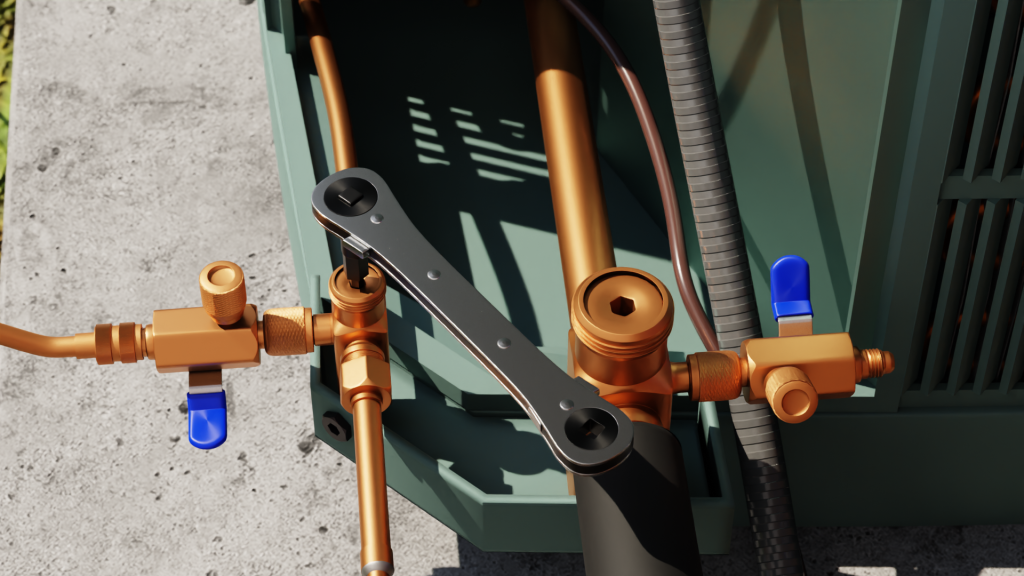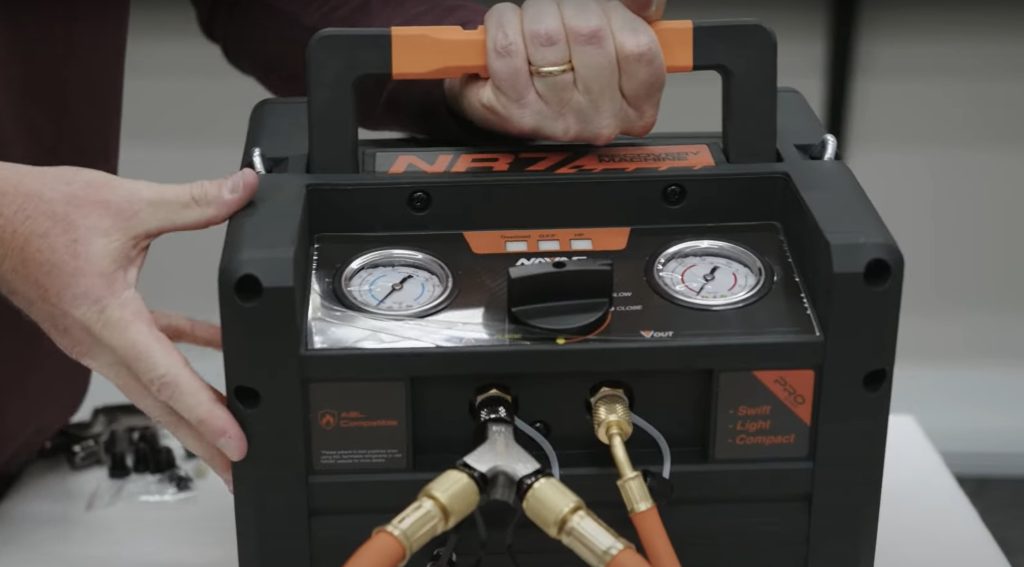Get Tech Tips
Subscribe to free tech tips.
Should I Pump Down or Recover?
During my second year in HVAC, the company I worked for was hired to fix some poor work that was done on a multi-head inverter system. The system used flare connections, and many of them were leaking. The system also had a branch box, which meant there were even MORE flares. So we pumped all the refrigerant down into the condenser, remade all the flares on the system, and began a pressure test. Using soap bubbles, we found quite a few flares we needed to tighten.
After that, we watched the gauges and could see that the pressure in the system was still dropping. We checked everything again and could find no problems. It took us a couple of hours to realize that the nitrogen was leaking back through the service valves and into the low side of the condenser.
Service valves are valves that separate the condenser from the rest of the system. Here’s a great video with some cutaways of the inside of the valve so you can better understand how they work. Once nitrogen has leaked into the condenser, the refrigerant needs to be recovered and disposed of because it is now blended with nitrogen and no longer pure.

This is not the only time this has happened to me. This last summer, I was replacing a TXV and realized during my vacuum that my service valves were leaking back into the condenser. I had to recover the charge and pull a vacuum on the condenser as well as the lineset and evaporator coil. Pumping down a system can be a great time saver, but is it always the best idea?
Factors to Consider
When deciding whether to pump down or recover the refrigerant, there are multiple factors to consider. These are my thoughts on the matter, but they’re not intended to be comprehensive.

Age of the System: I would be less inclined, now that I have run into problems several times, to pump down an older system with expensive refrigerant. If nitrogen leaks back and mixes with several pounds of R22 that you didn’t charge for, you could be out a considerable amount of money. The downside is that you now have to pull a vacuum on all the old oil in the system, which can take a long time.
Type of Refrigerant: I may be more inclined to take a chance on a condenser full of 410A, which is relatively cheap, than a condenser full of R22. Just my own opinion.
Amount of Refrigerant: How large of a charge do you have? If you contaminate 20 lbs of R22 with nitrogen, you are going to have a bad day. If it’s a 5 lb system, the risk is lower.
Location of the Filter Drier: if the filter drier is inside the condenser, I have always recovered the refrigerant and replaced the filter drier. I am not 100% sure this is required, but it seems to be best practice.
Overall, I am becoming more convinced that recovering refrigerant on middle-aged to older systems is a good practice. It prevents expensive and time-consuming mistakes, even if it adds precious time to your vacuum procedure.
—Matt Bruner











Comments
To leave a comment, you need to log in.
Log In